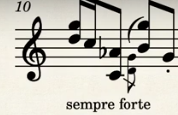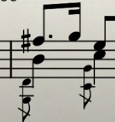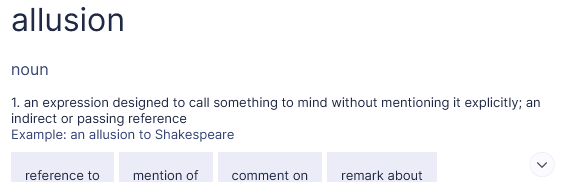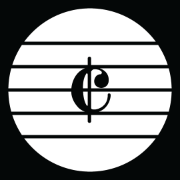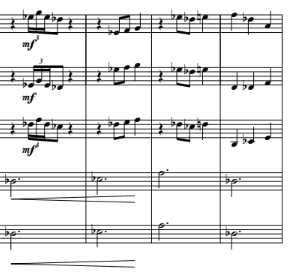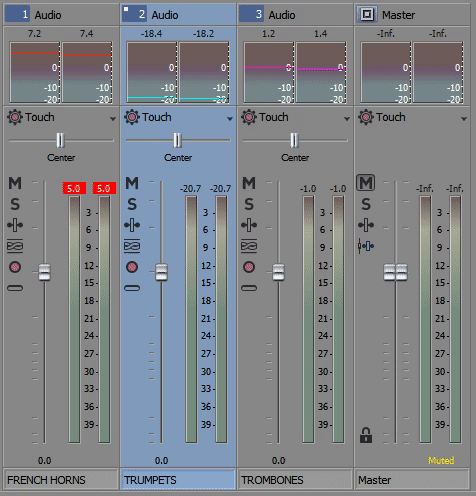All Activity
- Past hour
-
The way that musehub works best is if you have it set to launch upon startup. it has little to no impact 🙂 Also, the Musehub login is different from the Musescore.com / .org logins I found a solution to it. I'm going to make a second post with an updated video to resolve some balancing/sound issues, and to showcase the reason why that was happening. To give you a summary, apparently I have to apply a soundflag to each part, and set it to "Classic Phrasing" to fix that... Who knew... lol
-
Let me try something new. I believe the audio issues that you all are hearing with my uploads are stemming from my use of Dolby Atmos, external speakers, and equalized headphones. I don't have a Raw Audio output to proof listen-to after writing music. The Musescore mixer is also notoriously under-monitoring for gain and overload, as in muse mixer, it didn't indicate this at all. It indicated French Horn was much lower than Trumpet, among other inconsistencies
- Today
-

🌎 World-International Music
FILMSCORE replied to FILMSCORE's topic in Incidental Music and Soundtracks
Concluding part of "World-International Music" 🇺🇸 America,🇬🇧 United Kingdom,🇪🇸 Spain, 🇦🇹 Austria,🇩🇪 Germany,🇮🇪 Ireland- 1 reply
-
- flavours
- world-international music
- (and 6 more)
-
Henry Ng Tsz Kiu started following The boreal forest
-
PeterthePapercomPoser started following The boreal forest
-
there’s more where this came from
-
Hi again @Dima Kravets! I agree with what @luderart has said above about the difficulty of some of the double and triple stops. Including consecutive double stops that can be really difficult as well! Such as these: and these: In the first image the D and G have to be played on the G and D strings respectively and right after using those two strings for the C and Ab. In the 2nd image the G and D open bottom strings are played before moving to a parallel fifth on the A and E strings playing a B and F# which have to be barred at the same location on the finger board which can be difficult. I also agree that a real performer could definitely breathe more life into the composition with their interpretation. But it's a thousand times easier to make a musical interpretation if it is clear to the performer that the composer already has an idea of how the piece can be expressed in a musical way. This is especially important for pieces that are for a solo instrument because the soloist is tasked with keeping the momentum and musicality of the work all on their own which is much more intensive than collaborating with another performer. The soloist is asked to "make something out of the work" that in many cases has never been performed before. So having a good idea of what you want as the composer can really help the performer out and facilitate a future performance. And making a good rendition with lots of tempo changes and musical indications as to how the piece should sound even in electronic form is important as well (perhaps as a selling point to get a performer convinced to perform it). I see from your profile that you specialize in chamber music so you probably already have a good idea about that. But when you say things like: it makes me think that you don't see the point or value of making a realistic rendition, which is a shame. Needless to say, the piece sounds very mechanical throughout and could stand from some humanization and TLC to improve it. But it's better to already be thinking of those things as you're composing it rather than having to go back and revise a piece that wasn't conceived musically to begin with. That's just my own perception of the piece however. I look forward to hearing more of your contributions to the forum (as well as potentially your opinion about other composers' works on the website!) Thanks for sharing. P.S. I'm sure the reviewers of your work (including myself) would appreciate a ❤️ or a 🏆 reaction/acknowledgment of their time and effort that they took to listen and formulate a response. It would really help our little musical community flourish! Thanks in advance!
- 2 replies
-
- 1
-

-
- classic
- tiny pieces
-
(and 3 more)
Tagged with:
-

🟫 𝑺𝒚𝒎𝒑𝒉𝒐𝒏𝒊𝒄 𝑶𝒓𝒄𝒉𝒆𝒔𝒕𝒓𝒂𝒕𝒊𝒐𝒏
FILMSCORE replied to FILMSCORE's topic in Incidental Music and Soundtracks
Thankyou 4 your Indepth-Review, i was shocked to see it. Thankyou............ The Harp plays only Once, at the Start of the Track with the Timpani, Primarily to initiate the "SIGNATURE" Thankyou..........The software can take "BOTH-BARRELS" ...... he he , quick harp glissandi is possible, and there used in other productions already posted. Thankyou..........All Production-Trax posted ,are using a "RICOCHET" Reverb, and there is a problem with it, as this software is a Classified-Alpha/Beta version. ---------------------- I had to Look up 2 words that you used, as iv never heard them B4.............. But now i know , & Thanx again 4 your Detailed Review. -
Henry Ng's Moment Musical No. 2, arranged for organ
PCC replied to PCC's topic in Piano Music, Solo Keyboard
It's a limitation of how I use MS probably. irl I would couple the manuals to the pedalboard so the bass would sound more prominent irl -
Henry Ng Tsz Kiu started following Sonata in One Movement (ca. 17') and 'Poème': a 30-second hommage to Scriabin
-
.thumb.png.8b5b433a341551e913a34392660bc95b.png)
'Poème': a 30-second hommage to Scriabin
PeterthePapercomPoser replied to 林家興's topic in Piano Music, Solo Keyboard
Hello @林家興! Nice job! This reminds me of @Thatguy v2.0's Prelude No.11! In that piece, he tried to marry the concept of the Mystic Chord with the Acoustic scale. Not surprising that it seems similar to this piece given that they're both influenced by Scriabin. They both have a sense of being a kind of unanswered question or have a mysterious unfinished-ness about them. It would be great to hear this performed live! Perhaps, if you don't perform it yourself, you could ask @Henry Ng Tsz Kiu to perform it for you? Thanks for sharing! -
.thumb.png.8b5b433a341551e913a34392660bc95b.png)
🟫 𝑺𝒚𝒎𝒑𝒉𝒐𝒏𝒊𝒄 𝑶𝒓𝒄𝒉𝒆𝒔𝒕𝒓𝒂𝒕𝒊𝒐𝒏
PeterthePapercomPoser replied to FILMSCORE's topic in Incidental Music and Soundtracks
Hi @FILMSCORE! Nice orchestration! To me it has the hallmarks of a charcuterie of different orchestral textures from the classical orchestral literature. The beginning starts as if you're going to give us a trial run of all of your orchestral samples for us to test out how your orchestral libraries sound. There's a clear allusion to Holst's Jupiter from the Planets Suite (around the 1:00 mark although the melodic content in the brass is a bit different). I'm not sure what the fanfare near the beginning is from. The harp is often too loud in comparison to the rest of the instruments and is not doing its signature glissando flourishes that could give your orchestration so much more color. Although it might be really taxing on your software/equipment to render quick harp glissandi with so much reverb. It might be easier to render the harp and the rest of the instruments with less reverb especially if they're all playing together. Thanks for sharing! -
.thumb.png.8b5b433a341551e913a34392660bc95b.png)
Bateux arrivant au quai
PeterthePapercomPoser replied to Samuel_vangogh's topic in Piano Music, Solo Keyboard
Hello @Samuel_vangogh! I like the vibe of this piece and as you've already stated above, I understand that your intent was to create a certain background mood? It's not too attention getting and serves that purpose well. Also about the counterpoint - the way you use it is well suited for your intent because the heterophonic/polyphonic textures tend to lose the focus of the melodic line. This would be more of a problem in a more deliberately thematic work like a sonata but I think it works well here. Thanks for sharing! -
.thumb.png.8b5b433a341551e913a34392660bc95b.png)
Feedback on Piano Piece
PeterthePapercomPoser replied to Ho Sen Ken's topic in Piano Music, Solo Keyboard
Hi @Ho Sen Ken! Wow! What a great and intense Bartok-like piano banger! It reminds me of one of Bartok's early works Scherzo in E minor for Piano. Although admittedly, your work is a bit more similar to later more harmonically adventurous works. I'm looking forward to hearing more of your contributions to the forum (and besides sharing your music you could also tell us what you think of other composers' works!) Thanks for sharing! To reward those of us who have taken the time to listen and review your pieces, you could also leave a ❤️ or a 🏆 reaction to support our community and let us know that you acknowledge our time and effort we've put in towards reviewing. I'm sure the people above who have reviewed your piece as well as myself would really appreciate it! Thanks! -
Hello @Fugax Contrapunctus! I like the idea of this piece but I personally would do a few things differently if it were mine to make it more expressive and bring out its best features. The thing that bothers me most about it right now as-is is that the tempo it's played at and the fact that the piano starts it soon makes the individual voices hard to hear and instead ends up sounding like a sequence of chords metronomically and mechanically performed. I think if it were played slower and with the piano removed it would bring out its best features of being a really great and haunting chromatic canon! The other reason that this would work better (in my opinion) is that the listener would then be able to absorb the melodic material without immediately being interrupted with the stretto-like canonic treatment that you employ in the piano part. Of course, you're the composer and I don't expect you to make these changes, but I thought I'd mention my rationale behind why I'd want it this way anyway for any benefit that it could possibly impart to you in the future. But I thoroughly enjoyed this canon - thanks for sharing!
- Yesterday
-
Hi @PCC! Great job with this arrangement! I was having trouble hearing the bass part in some of the sections so I turned on my bluetooth speaker but it kept glitching out like crazy with the sound cutting in and out constantly which made it unlistenable (and this happened only in the "principale" sections - it played the rest of the piece just fine for some reason). So I know that my inability to hear some of the bass parts was in part due to the speakers on my Chromebook. But I also question whether there might be something in the recording itself that makes my bluetooth speaker behave the way it did in the principale sections? Either way - I think I got the gist of your intent in how it's supposed to sound. Thanks for sharing!
-
.thumb.png.8b5b433a341551e913a34392660bc95b.png)
Solitude for Solo Piano
PeterthePapercomPoser replied to nostalgia's topic in Piano Music, Solo Keyboard
Hi @nostalgia! I listened to the most recently updated version. A nice piece made up of chord clusters and pentatonic melodies and chromaticism! It does sound quite contemplative - like solitude is expected to sound. Thanks for sharing! -
PeterthePapercomPoser started following Sonata in One Movement (ca. 17')
-
Yes, that is what I found out from my Violist's demonstration of it. 😁 Perhaps the Viola, whilst larger and more projective than the Violin, is still too small of an instrument for Laissez Vibre on non-open-pitch to occur. (They say that a Viola is most viable as a 20"; which no one can play because it's too large even for the tallest person on Earth; I wonder if Laissez Vibre stopped-pitches on that size woukd ever be viable. That inquiry will remain open for quite a long time, I suppose. heh!) On a limb, I particularly favor DB natural and artificial harmonic pizzicato (alias "Harp Harmonics lent to DB") for this^^ very reason.
-
mercurypickles started following Sonata in One Movement (ca. 17')
-
Hi all! Been a while since I posted again as I've been extremely busy with both school and my writing. I'll be slowly uploading some of the pieces I've been working on over the last few months as we head on toward the summer. I hope to be much more active here over the coming months, as I'll have more time to engage with a community such as this. Anyway, this is a sonata I more or less began on a whim back in March. It is dedicated to my childhood piano and voice teacher, a close personal friend as well as someone who shaped my musicianship. She is the person that encouraged my earliest efforts at composition, so it only seems right that my first keyboard piece in a few years (and by far my largest-scale keyboard piece) should acknowledge her influence and friendship. Eventually I do hope to get an actual recording of this piece made because I'm really proud of it, and if that comes to fruition I will gladly share it here. The piece is cast in a single movement. While I have written single movement freestanding pieces, this is my first completed attempt at a fully functional sonata form movement. Additionally, this piece is also my longest single piece of continuous music (my symphony is longer but it is in three movements). I decided to write the piece after an intensive study of Beethoven's sonata forms in my first year of conservatory, using the sonata theory developed by Hepokoski and Darcy. I will not get into a full analysis of my own piece as I generally try to avoid picking apart my own works, but the general outline (including the tonal structure) is as follows: Exposition: Off-tonic (B major) introductury passage Split into a few sub-sections First subject (E major) - cheery march with some crunchy dissonance Split in two parts - first in E major, second in A-flat Transition Second subject (c-sharp minor) - lilting theme, pastoral and gently sighing Closing material (c-sharp minor) - a few ostinati form the backbone of this passage Development: Restatement of opening transposed (D-flat major) Fragments of first subject mixed with motive from introduction (B major at first) Central episode (pantonal) - this part of the piece uses a technique called tempo fugue. The term was invented by György Ligeti to describe multiple simultaneous rhythmic consisting of statements of a fixed amount of musical material. Essentially, a fugue that takes place in rhythm and time instead of tonal harmony. My implementation here is personal, and the "fugue subject" is based on the second subject. Episode based on transitional material (B-flat major, furthest point of tonal distance from the root of the piece) - primarily serves as a segue from the tempo fugue and the following march music March passage (B-flat major) - taking advantage of the expressive and structural effect of being as far from the tonic of the piece without going fully atonal/pantonal, a new theme emerges out of texture from the exposition's closing material Grand build-up to recapitulation (modulatory) - pulls on a somewhat hidden tune that was stated much earlier in the piece (bonus points to whoever finds it!). Features substantially flashier keyboard writing, which I am now struggling to learn (lol) Recapitulation: First subject (just first part, E major - e minor) Transition (e minor) - more bonus points to whoever figures out what the new material here is Second subject (e minor) Closing material/first subject pt.2 (E major) - the second half of the first subject is worked together with the closing material from the exposition, leading to a lush half cadence Coda (E major): Order of sub-sections changed to reflect more effective pacing for this part of the piece. There are a few critical motives that undergird the whole of this really almost over-wrought structure, but they will go unmentioned and I would discourage any serious attempts to try and find connections that may or may not exist. Happy listening!
-
Hi Carl @Carl Koh Wei Hao! Long time no see! Hope you are well now! Yeah it’s quite different from my past music though I won’t say I have transitioned to a new style, because I really never have one myself, I only write according to what the music need. Maybe there’s some change due to the completion of my (huge) Sextet: Thx for commenting on my piece as your 1st comeback post haha! Henry
-
Thanks you for your detailed analysis. I definitely will review/assess the triplet figure in the strings. And I am so very pleased you found the work appealing!
-
Thanks for taking the time to comment on my work. I will review/reflect the percussion line. Mark
-
Rich started following Trio Sonata in g minor for Alto Recorder, Violin and Continuo
-

Trio Sonata in g minor for Alto Recorder, Violin and Continuo
Rich replied to Willibald's topic in Chamber Music
A very good effort in a difficult form to get right. I would recommend more immitative counterpoint in the 1st movement---particularly in the cello. While I get the "grave" tempo and the intended feel, sonic interest might be better served by a bit more motion. Not to hinder but to ACCENTUATE. -
Hey Henry! A very nice piece of impressionistic music! I truly enjoyed it. I love the tonic pedal point and the melody in the left-hand part of the A-flat major section. This piece gives me an oriental feel – it's much different from the other pieces you composed more than a year ago. Do you still write Classical-styled music, or have you transitioned to a new compositional style? I'm sorry for being quiet on this forum for a while - I needed to take a break from composing and work on bigger projects. Life's starting to get busy. Carl
-
Henry Ng Tsz Kiu started following Tau Ceti
-
Hi again @Alex Weidmann! I like the ebb and flow of this piece! There's definitely a gradual rise and fall in dynamics that sounds very natural to the arc of the piece. What doesn't sound natural however is how the melodic line sounds interrupted or cut off by occasional staccato notes in the strings in the beginning. This is a problem that you soon rectify with the addition of more instruments playing the melody and a thicker orchestration. But I like the piece despite that - it makes me think of a peaceful and potentially life-bearing world in orbit around Tau-Ceti in the goldilocks zone for that star. Although, now that I read about it, the Tau-Ceti system is quite a bit older than our own solar system, so it's possible that it has already harbored intelligent life in its past. Musically it amazes me how you are able to make music out of the most random seeming musical gestures on solo instruments with a harmonic pad underpinning. It's so totally alien to the way I write music. You also make use of really alien sounding chords that I would never think of using (all of which is appropriate for a piece about an alien solar system I guess! LoL) Thanks for sharing!
-
Hi @MJFOBOE! I like this piece! I especially like the clever way you end it. The listener doesn't realize until the very end that the D major area that the piece has been in for basically its entire duration is actually the dominant and that G is actually the tonic! I also love the Mixolydian b6 mode you use with some alterations here and there. The following excerpt and wherever this figure recurs loses some focus for me: Especially the 1st bar there - you give the listener trills in the winds and that 16th note triplet figure in the strings. There isn't really anything there for the listener to latch onto in my opinion. That's my perception of the piece. Thanks for sharing!
-
.thumb.png.8b5b433a341551e913a34392660bc95b.png)
Theme for a Star Trek podcast
PeterthePapercomPoser replied to Alex Weidmann's topic in Orchestral and Large Ensemble
Hey @Alex Weidmann! I listened to the most recent update (#32). The main theme has the makings of a great feel-good space western! But, I do have to say that in my opinion, the key modulations in the piece (especially the last one at the very end) sound out of place and unnecessary, like you're changing the key just for it's own sake without really any real musical reason guiding that decision. Also, I like how the piece starts very underwhelmingly with really soft high strings and slowly builds up to the main theme first on trumpets and then scored more fully with strings on the main theme. But then, the arc kinda doesn't know what to do with itself after 1:07 because it feels like the climax of the piece has already been reached and the music doesn't know whether it wants to keep growing to an even bigger climax or die back down to a whisper. Those are my immediate perceptions of the piece. Thanks for sharing and let us know if your music ends up getting featured! -
Its not enough to just HEAR the music, youve also got to SEE the music, and im not talking Notation-Score. Regarding the FINAL-MIX-DOWN , iv often thought to myself........... " Yeah that sound ok ".........Without even checking to see the levels-Balance. in the example below: 1: The French Horns were 5-db OVER 100% 2: The Trumpets were 27-db LOWER 100% 3: The Trombones were 6-db LOWER 100% The Final Result sounded imbalanced



